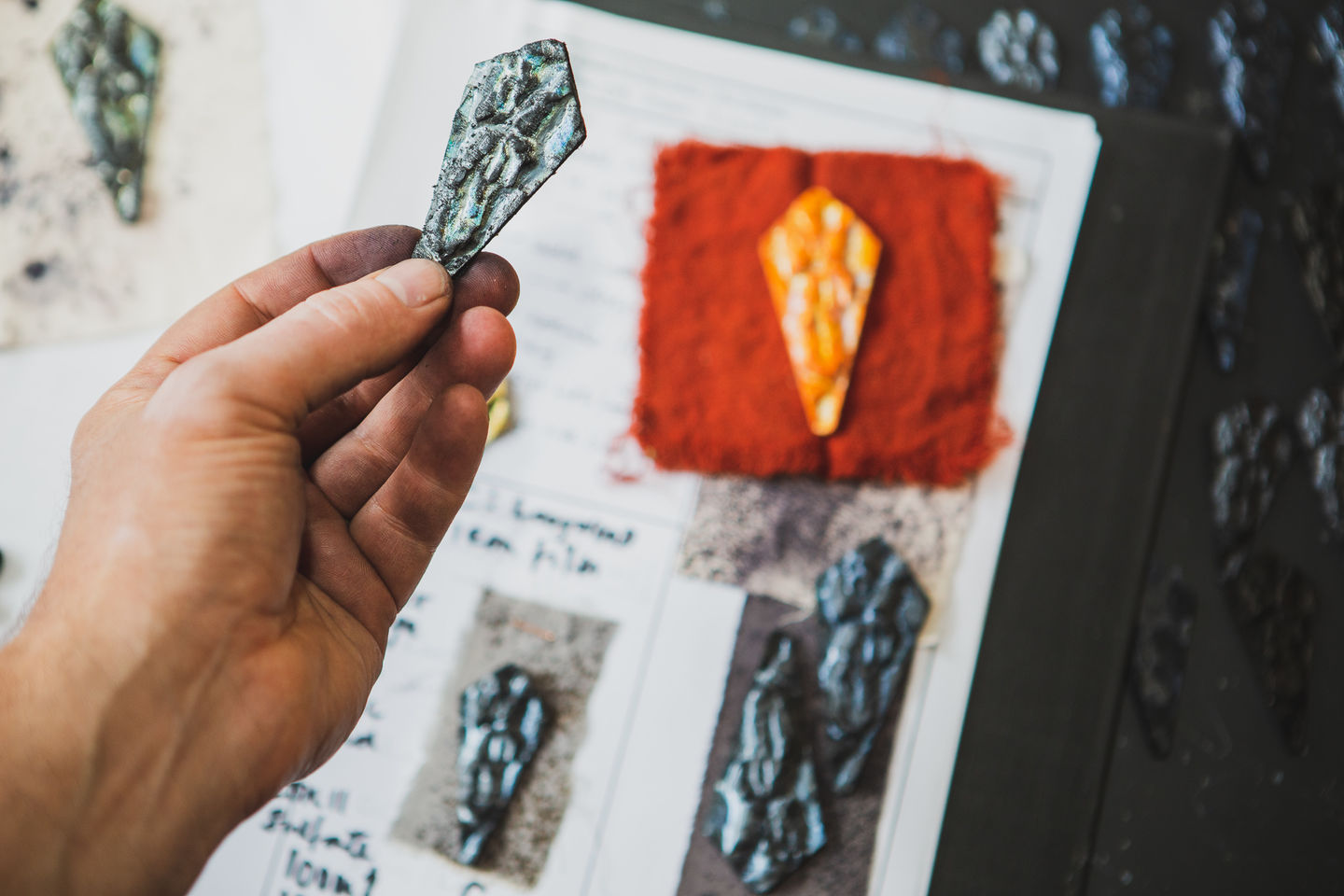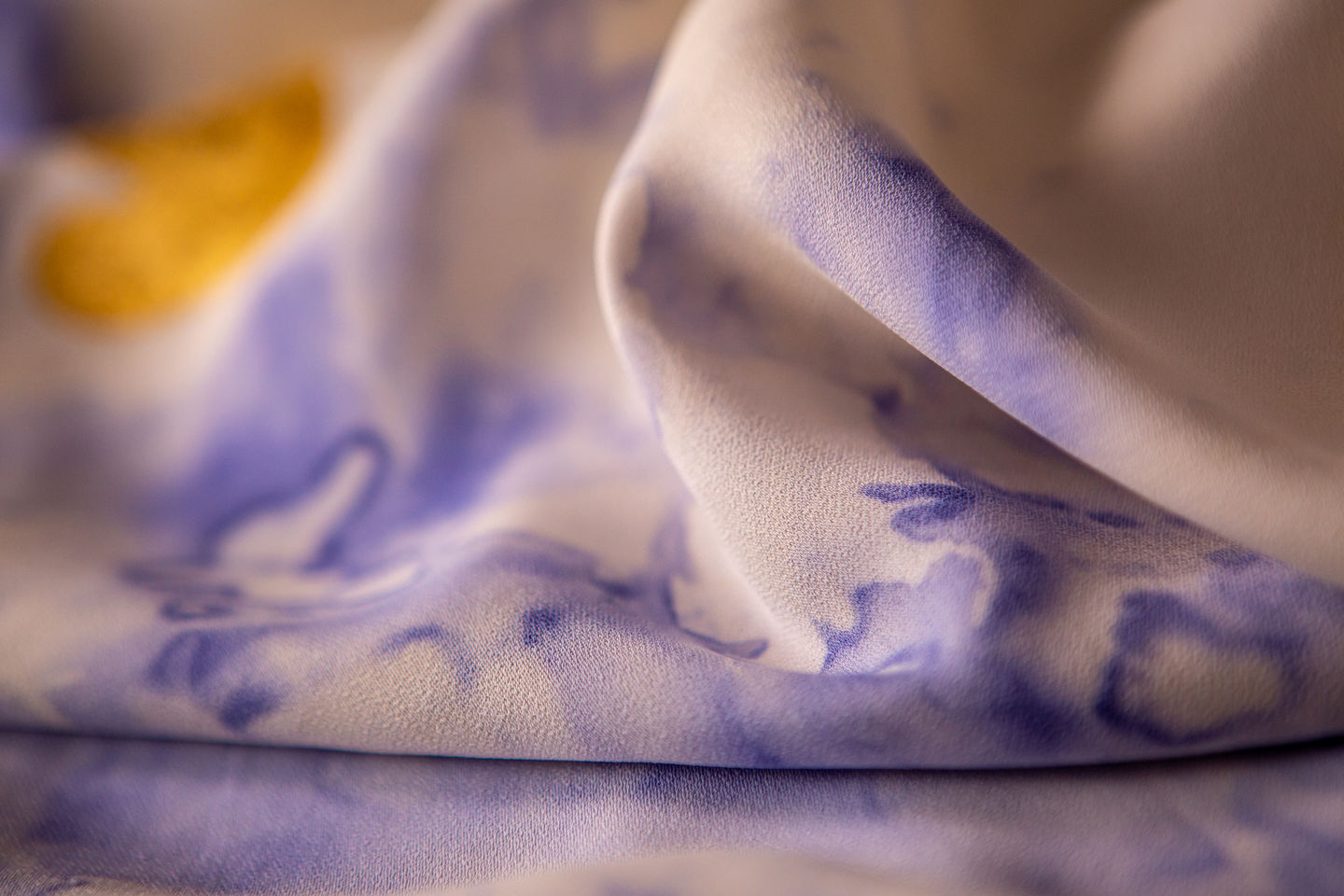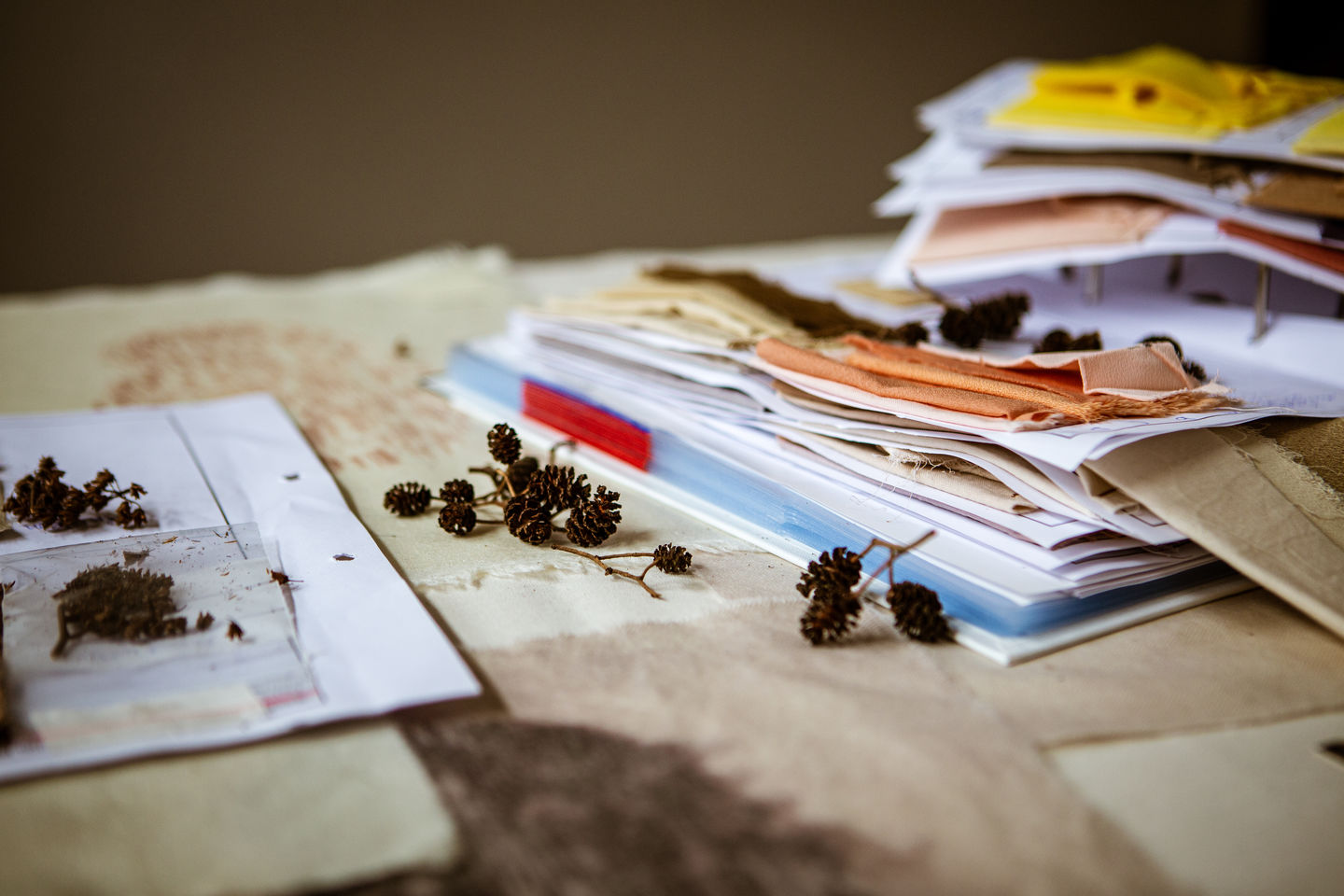Naturally Dramatic
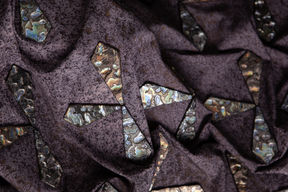
Project Host and Infrastructures
The project is hosted by the Biobased Colloids and Materials (BiCMat) research group and sponsored by Aalto Materials Platform, with work carried out in the following research, teaching and arts infrastructures: Aalto Bioproducts Centre, Biofilia Centre for Biological Arts, Aalto Fablab Digital Fabrication Laboratory, Aalto University Digital Design Laboratory, and with great support from the Workshops of Aalto School of Arts, Design and Architecture and the Costume Workshop at Aalto Studios.
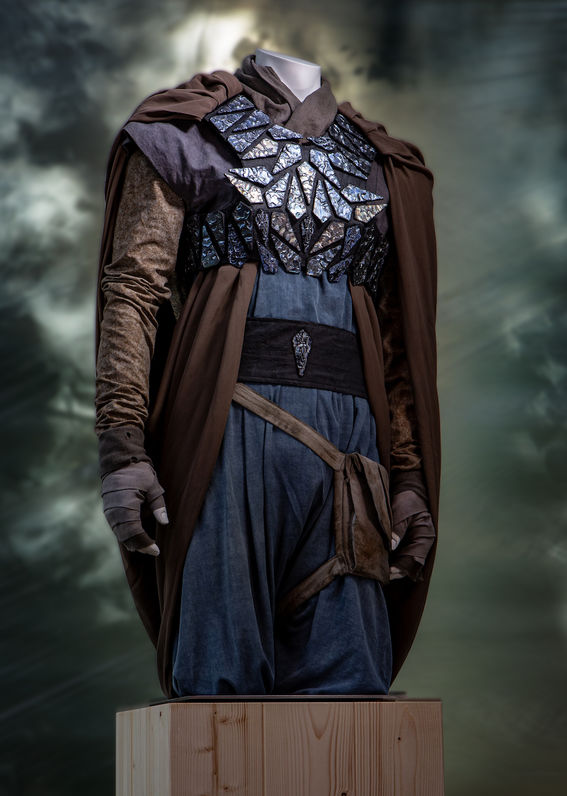
Sustainable Costume Design
Costumes play a central role in the creation of films and live stage performances.
Costumes are linked to the global fashion industry, which produces 8-10% of global CO2 emissions (4-5 billion tonnes annually) (Niinimäki et al., 2020, p. 189). Though it has considerably smaller impacts, if the entertainment industry adopted sustainable textiles design, best practices would attract consumer interest and encourage adoption in other industries.
The entertainment industry has started moving towards “greener” processes, but much work still needs to be done (Astikainen and Puolanne, 2019). Traditional ways of making costumes have little regard for how it effects the environment or employees.
While digital technology has had a big impact on the film industry and is drastically changing how movies are made, costume design is still a specialized trade, relying on traditional techniques and materials that require a great deal of handwork to create custom costumes for specific bodies and specialized use. Significant resources are dedicated to creating them, even though the life-cycle of a costume is short, as most film productions run for only three to six months.
Bio- and bio-based materials outperform many toxic materials. ‘In many cases, bio-based materials are considered the best alternative to currently dominant fossil-based ones’ (Kääriäinen, 2020, p. 12). Though sustainable costume design is still in its early days, it will help to reach the Sustainable Development Goalsfor decent work and economic growth; and it contributes to re-thinking industrial production processes by providing innovative techniques and materials that can be regionally sourced; further, it helps with responsible consumption and production.
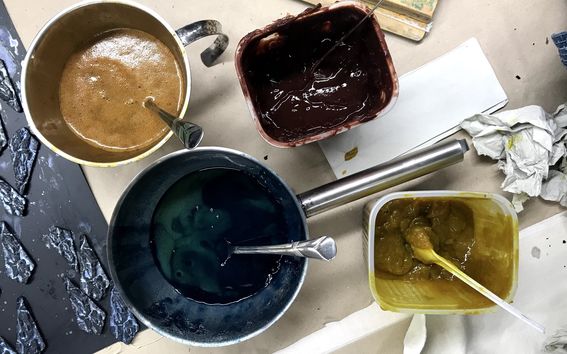
Biobased Colloids and Materials (BiCMat)
The BiCMat group, led by Prof. Orlando Rojas, works toward supporting global sustainable development through research on the development and application of renewable resources, including lignocellulose, proteins and other biopolymers. Their research aims to discover competitive alternatives for fossil materials.
The BiCMat group is part of the Department of Bioproducts and Biosystems at Aalto and is a leading group in the cross-disciplinary Aalto Materials Platform. The research group consists of scholars at various stages of their careers -- from MSc students to postdoctoral researchers -- attracting collaborations with other academic and research institutions around the world. The group focuses on finding competitive alternatives to fossil materials through research into bio-based materials at different size scales, mainly those displaying large interfacial areas, such as fibers (micro/nano fibers), fiber networks, particles, and colloidal systems.
Research Project Team
Led by Prof. Orlando Rojas: textile designer Urs Dierker, Dr. Alp Karakoc, Dr. Blaise Tardy, Dr. Bruno Dufau Mattos, Dr. Guang Chu, Dr. Marco Beaumont, Dr. Maryam Borghei, Bin Zhao, Janika Lehtonen, Ling Wang, Luiz Garcia Greca, Mahdi Rafiee, Roozbeh Abidnejad, Rubina Ajdary, Yang Meng, Dr. Heidi Henrickson, and Konrad Klockars and Noora Yau of Structural Colour Studio
Special Thanks
Support service staff in the Department of Bioproducts and Biosystems: Sanni Mero, Almo Koski, Timo Yloenen, Timo Kotilahti, Rita Hatakka, Harri Koskinen, Marja Kärkkäinen, Tuyen Nguyen, Leena Nolvi, and Christian Orassaari
ARTS Technical Services in the Department of Design: Eeva Heikkinen, Hannu Paajanen
Aalto Fab Lab: Krisjanis Rijnieks
Aalto Studios Workshops: Johanna Ilmarinen, Jami Laakso, Pasi Pakula, and Jyri Lahelma
Aalto Biofilia: James Evans and Juha Linnekoski
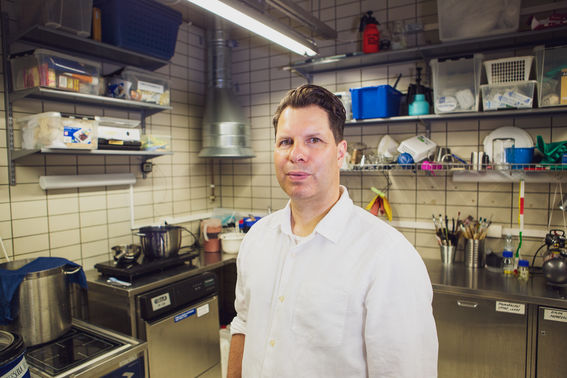
Urs Dierker
German-born textile designer and costume researcher Urs Dierker develops and creates surface designs and effects for film costumes, and critically investigates the making and history of film costumes. Urs has worked in North America and Europe on stage productions at the German State Opera Berlin and for the Metropolitan Opera New York. He has worked for over a decade on film productions including The Handmaid’s Tale, The Hunger Games: Mockingjay, and Star Trek Discovery. Urs is a member of IATSE and was a board member of CAFCAD Toronto.
Urs has a Master’s degree from York University, Canada, a post-graduate diploma in sculpture from the Bezalel Academy of Arts and Design, Israel, and a BA in visual communication from the University of Applied Science in Bielefeld, Germany. Urs is also a men’s tailor educated at the German State Opera Berlin. He has given lectures at the School of Fashion at Ryerson University and at the School of the Arts, Media, Performance & Design at York University. Urs has presented conference papers on costume design in Canada and England, and publishes in popular and academic publications.
Photography
Juho Heikkinen
Art Director & Photographer
juhodesigns.com
Eren Öztekin
Videographer & Photographer
vimeo.com/erenozteki
References
Astikainen, K., Puolanne, A., 2019. Ekosetti. AVEK, Audiovisual Producers Finland, Aalto University, Finland.
Cusola, O., Rojas, O.J., Roncero, M.B., 2019. Lignin Particles for Multifunctional Membranes, Antioxidative Microfiltration, Patterning, and 3D Structuring. ACS Appl. Mater. Interfaces 11, 45226–45236. https://doi.org/10.1021/acsami.9b16931
Dierker, U., 2019. Dierker Every stain a story- The many dirty undershirts of John McClane in Die Hard (2019). Stud. Costume Perform. 4, 193–205. https://doi.org/10.1386/scp_00004_1
Habibi, Y., Lucia, L.A., Rojas, O.J., 2010. Cellulose Nanocrystals: Chemistry, Self-Assembly, and Applications | Chemical Reviews. Am. Chem. Soc. 110, 3479–3500. https://doi.org/10.1021/cr900339w
Kääriäinen, P. (editor), 2020. The CHEMARTS cookbook. Aalto University.
Niinimäki, K., Peters, G., Dahlbo, H., Perry, P., Rissanen, T., Gwilt, A., 2020. The environmental price of fast fashion. Nat. Rev. Earth Environ. 1, 189–200. https://doi.org/10.1038/s43017-020-0039-9







